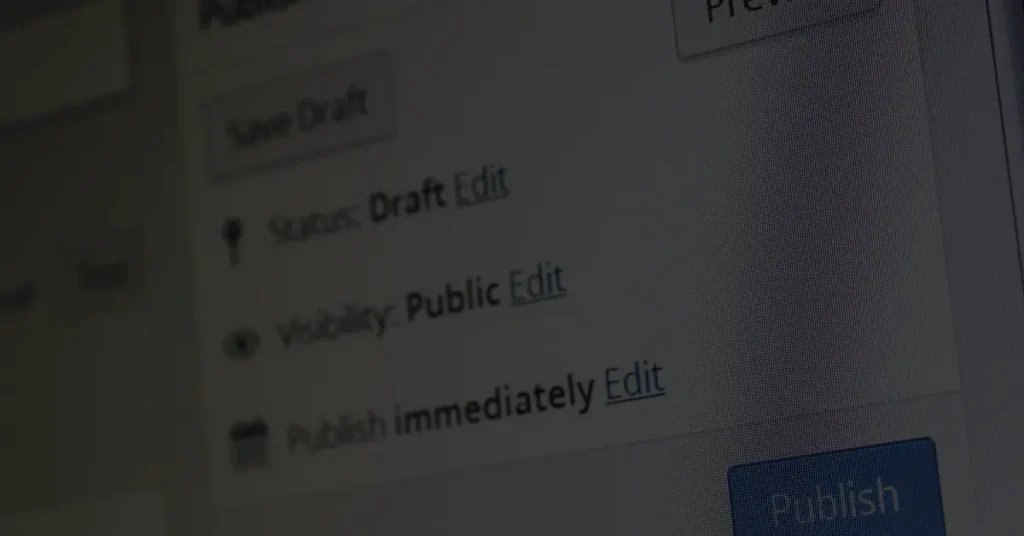How to activate and deactivate WordPress plugins?

WordPress is a powerful content management system (CMS) that offers a wide range of features and functionalities through the use of plugins. These plugins allow you to extend the capabilities of your website and enhance its performance. In this article, we will guide you through the process of activating and deactivating WordPress plugins, ensuring that you can make the most out of these valuable tools.
Understanding WordPress Plugins
Before we delve into the activation and deactivation process, let’s take a moment to understand what WordPress plugins are. Plugins are small software modules that can be installed on your WordPress website to add specific features or functions. They enable you to customize your website without having to write any code. With thousands of free and premium plugins available, you can find solutions for various needs, such as SEO optimization, security enhancements, contact forms, e-commerce integration, and more.
The Importance of Activating and Deactivating Plugins
Activating and deactivating plugins is an essential aspect of managing your WordPress website. By activating a plugin, you enable its functionality and allow it to perform its intended tasks. On the other hand, deactivating a plugin temporarily disables it, which can be useful for troubleshooting, performance optimization, or changing plugin configurations.
Properly managing your plugins ensures that your website remains secure, optimized, and functional. Too many active plugins can slow down your website and potentially introduce conflicts or security vulnerabilities. By activating and deactivating plugins as needed, you maintain control over the features and performance of your website.
How to Activate WordPress Plugins
Activating a WordPress plugin is a straightforward process. Here’s a step-by-step guide to help you through it:
Step 1: Accessing the WordPress Dashboard
To begin, log in to your WordPress website by entering your credentials on the login page. Once logged in, you’ll be redirected to the WordPress Dashboard, which serves as the central hub for managing your website.
Step 2: Navigating to the Plugins Page
In the WordPress Dashboard, locate the left-hand menu and find the “Plugins” option. Hover over it, and a sub-menu will appear. Click on “Installed Plugins” to access the plugins management page.
Step 3: Finding and Installing New Plugins
If you haven’t installed the desired plugin yet, you can click on the “Add New” button at the top of the plugins page. You’ll be taken to the WordPress Plugin Directory, where you can search for plugins based on their name or functionality. Once you find a suitable plugin, click on the “Install Now” button next to it.
Step 4: Activating Installed Plugins
After installing a plugin, you will be redirected back to the plugins page. Locate the newly installed plugin and click on the “Activate” button below it. The plugin will now be activated and ready for use on your website.
Best Practices for Activating Plugins
While activating plugins is relatively simple, it’s important to follow best practices to ensure a smooth and secure experience. Consider the following tips:
- Keep Plugins Updated: Regularly update your plugins to access new features, bug fixes, and security patches. Outdated plugins can pose a risk to your website’s security.
- Test Compatibility: Before activating a plugin, ensure that it is compatible with your WordPress version and other installed plugins. Incompatible plugins can cause conflicts or unexpected behavior.
- Managing Plugin Conflicts: If you encounter issues after activating a plugin, it might be conflicting with another plugin or your theme. Temporarily deactivate other plugins to identify the conflicting one and seek solutions accordingly.
- Monitoring Performance Impact: Some plugins can impact your website’s performance. Monitor your website’s speed and resource usage after activating a new plugin. If you notice significant performance degradation, consider finding alternative solutions or optimizing your website.
Deactivating WordPress Plugins
There are instances when you might need to deactivate a plugin. Whether it’s for troubleshooting purposes, optimizing performance, or simply not needing a specific feature at the moment, deactivating a plugin is a straightforward process. Here’s how:
Step 1: Accessing the WordPress Dashboard
Log in to your WordPress website to access the WordPress Dashboard.
Step 2: Navigating to the Plugins Page
In the WordPress Dashboard, find the “Plugins” option in the left-hand menu. Click on it, and then select “Installed Plugins.”
Step 3: Deactivating Plugins
On the plugins page, locate the plugin you want to deactivate and click on the “Deactivate” button below it. The plugin will be temporarily disabled, and its functionality will be turned off.
Managing Inactive Plugins
While deactivated plugins are not actively running on your website, it’s essential to manage them properly for optimal performance and security. Consider the following practices:
- Deleting Unused Plugins: If you no longer need a plugin, it’s recommended to delete it entirely from your WordPress installation. Unused plugins can potentially pose security risks if not kept up to date.
- Keeping a Backup: Before deleting a plugin, make sure to back up your website’s files and database. This precautionary measure ensures that you can restore your website to a previous state if needed.
Conclusion
Activating and deactivating WordPress plugins is an integral part of managing your website effectively. By following the steps outlined in this article, you can confidently activate plugins to enhance your website’s functionality and deactivate them when necessary. Remember to maintain best practices such as keeping your plugins updated, testing for compatibility, and monitoring performance impact. By doing so, you can optimize your website’s performance and security while enjoying the benefits of WordPress plugins.
FAQs
Q: How can I troubleshoot plugin conflicts? A: If you encounter conflicts between plugins, try deactivating other plugins one by one to identify the conflicting one. You can also consult the plugin’s documentation or support forums for troubleshooting steps.
Q: Can I reactivate a deactivated plugin? A: Yes, you can reactivate a deactivated plugin at any time by following the activation steps outlined in this article.
Q: Are inactive plugins a security risk? A: Inactive plugins can pose a security risk if not kept up to date. It’s recommended to delete unused plugins or keep them updated with the latest security patches.
Q: What should I do if a plugin slows down my website? A: If a plugin slows down your website, consider disabling or replacing it with an alternative solution. You can also optimize your website’s performance by caching, minimizing scripts, or upgrading your hosting resources.
Q: How can I find reliable and trusted plugins? A: When searching for plugins, use the official WordPress Plugin Directory. Read user reviews, check plugin ratings, and ensure that the plugin is regularly updated and supported by the developer.























